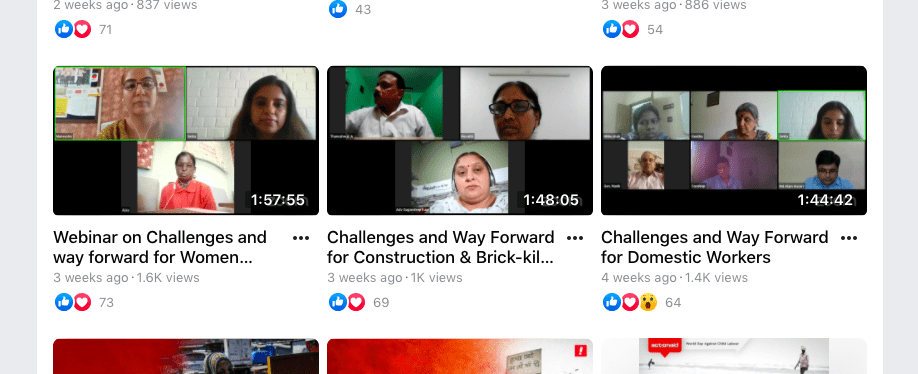Akshara Anirjita
ActionAid
New Delhi, India
When I set out to work in the arena of informal work and women, I knew I would be researching the precariousness of the economic landscape that women workers in India have to navigate. This “precariousness” owes itself to the “incalcubility” of tomorrow and whether it will bring with it a means of subsistence. COVID-19 has done away with this “precariousness” in the worst possible way; prospects of work have been rendered totally non-extant for the foreseeable future. Some concerns of informal workers have remained the same while others have been exacerbated.
In collaboration with academics, activists, and informal workers themselves, I have been helping ActionAid organize and host a series of webinars for the past month in an attempt to formalize a set of policy suggestions for public hearings. I have written policy notes on waste pickers, women farmers, MNREGA (National Rural Employment Guarantee) workers, and garment and handicraft workers.
I have also been compiling information on the state of informal women workers in the “Quarantine Centres” set up by state and union territories in an effort to sequester the migrant workers returning to their rural villages. Those migrants forced to stay in such centers are currently being treated as inmates in a prison; they are not allowed to leave, and if they do escape because of lack of food and adverse conditions, the state police captures and re-quarantines them. Those who run these quarantine centers seem oblivious to gender concerns; special wards are not allocated to women, and SGBV continues to be an especial threat for women migrant workers and their children living in such facilities.
The biggest concern shared among all of the aforementioned sectors is a lack of guarantees in the form of employment contracts as well as social security benefits. The workers in aforesaid categories also lack government-issued IDs, crucial for making them identifiable and valid to be recipients of future benefit programs. Issuance of these IDs, such as Kisaan cards for farmers, has been carried out in a gender-blind manner, which has served to further propagate hierarchies.
In the purview of my research, I am examining the task that lies ahead for the Indian government–its issuing of ID cards to its billion-strong population–and looking at how this can be carried out in a gender-sensitive way. This is critical for the “visibilization” of millions of informal women workers.

More information on ActionAid’s webinars can be found on their Facebook page.